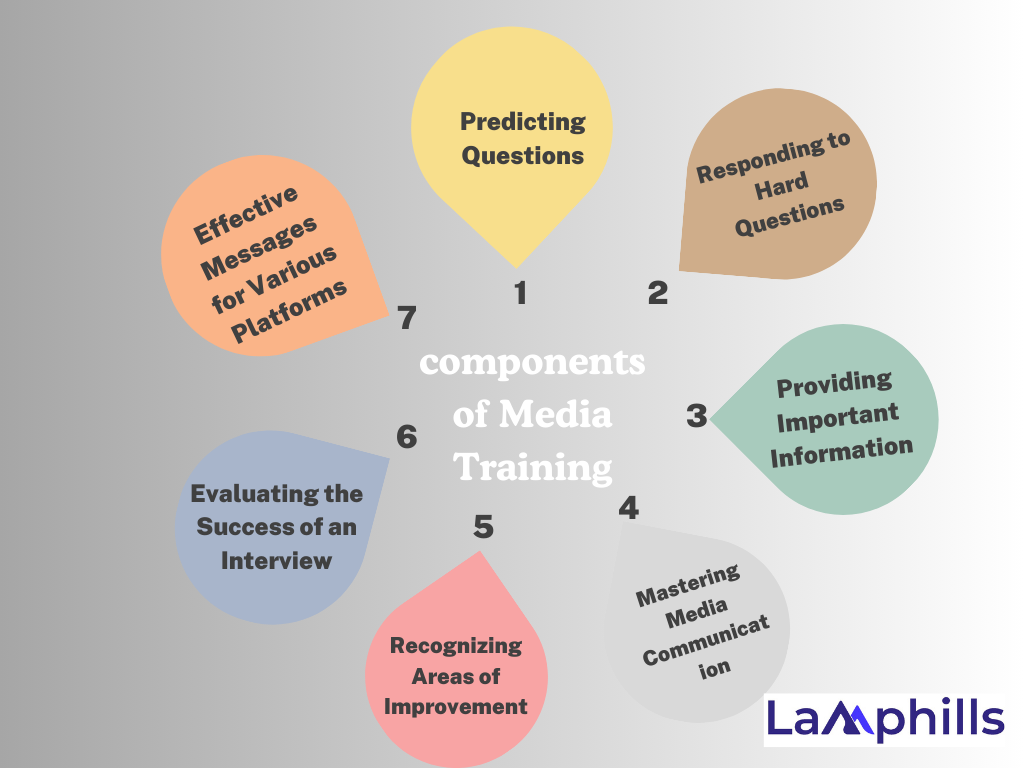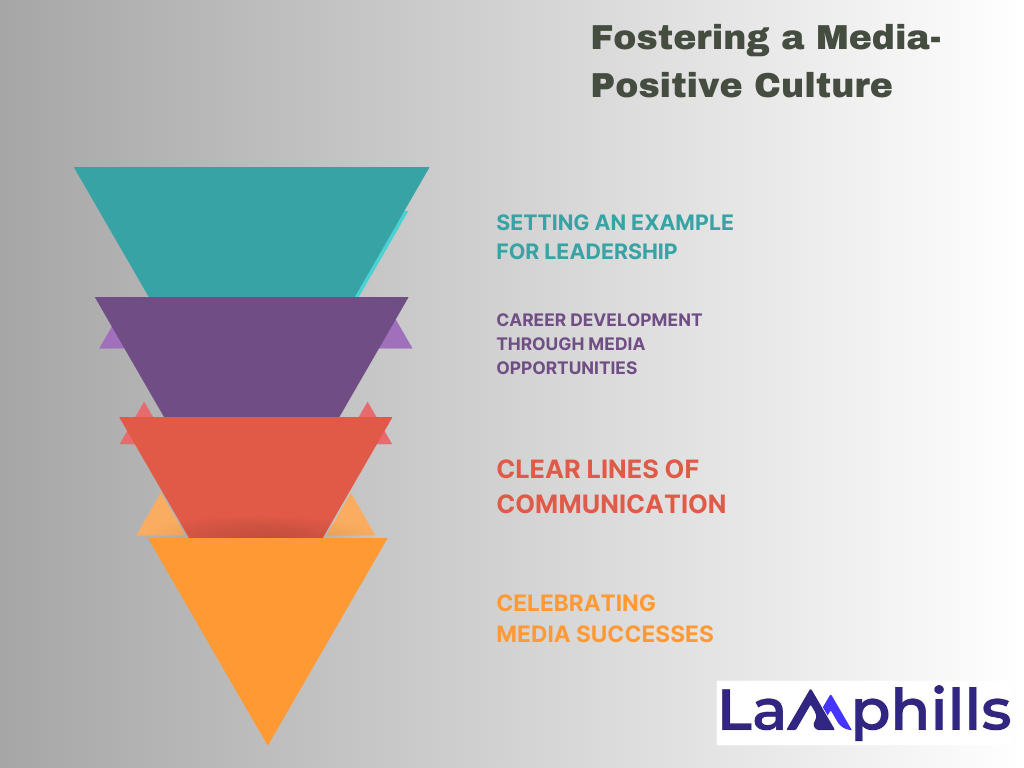As a crisis manager, I’ve witnessed a wide range of events, including product recalls, business scandals, and natural disasters. Every time a crisis strikes, the world’s attention turns to those in charge of leading the response. This is when the significance of media training becomes useful.
I remember one really difficult experience. A large technology business suffered a major security breach, exposing sensitive client information. The CEO, who never had media training was set to speak to the press the following day. The potential consequences were staggering: one false statement might send the stock falling, not to mention the damage to the company’s reputation.
Unlike then, the field of media can be challenging for businesses. One minute you’re enjoying the positive warmth of a feature piece, and the next a single blunder in an interview may spark a social media firestorm. It’s enough to make anyone break out in a cold sweat, especially if you’ve never had official media training.
For this reason and other reasons you could relate to, I would like to go into a topic that is frequently overlooked yet critical for any organization hoping to survive in today’s media landscape—media training. Trust me, I’ve been on the battlefields of business communications, and I’ve seen personally how media training can change how a company portrays itself to the world, especially for me a crisis manager. Think of it as a media boot camp, where you’ll gain the skills and confidence to manage every media engagement with composure and purpose.
Key Points
- Media training is an essential investment for businesses, this is because it equips you and your team with the skills and confidence to navigate media interactions effectively, manage your brand reputation, and achieve your business goals.
- Media training offers a multitude of benefits: It builds confidence, helps craft compelling messages tailored to different media platforms, and equips you to handle challenging questions and potential crises with grace and professionalism.
- Media training goes beyond traditional interviews: Effective training programs include role-playing exercises, mastering body language and vocal tone, and crafting concise key messages.
What Exactly is Media Training?

You might be asking “What exactly is media training, and why is it important for my business? Media training is a systematic and intentional strategy to provide founders, CEOs, entrepreneurs, executives, authors, and presenters with the necessary abilities to communicate effectively across different media channels.
It includes a variety of procedures, approaches, and strategies to help customers handle the intricacies of podcast and media interviews, public appearances, panels, presentations, TED, and social LIVES.
This program aims to develop the capacity to convey messages effectively, simply, and animatedly, retain self-control during interviews, and construct themes and storylines that link the business and brand with personal or organizational goals.
Understanding the Need for Media Training
I once witnessed a business owner go utterly silent before a live interview. He tripped over his words and hesitated to answer basic queries while rehearsing, It was a horrible event for all involved.
As a result of this, the CEO’s team reached out to me for assistance, and I realized we had only a few hours to prepare. I could feel his uneasiness as we sat down together. This was a boss who was accustomed to boardrooms, not newsrooms.
Nonetheless, he needed to project authority, serenity, and clarity. According to a Weber Shandwick study from 2022, 83% of consumers believe that the quality of a company’s response to a crisis influences their decision to continue doing business with them. I must say the stakes could not have been any higher. But in our short time together, I focused on three critical areas:
#1. Developing key messages
The CEO needed to deliver the facts clearly and consistently. We developed a series of key phrases that he could rely on during the press conference. These communications were straightforward, honest, and compassionate.
#3. Managing emotions
It is normal to feel nervous in high-pressure settings, but these feelings should not ruin a media contact. I taught the CEO grounding skills to help him stay cool, as well as how to deal with uncomfortable questions without becoming defensive.
#3. Form a Crisis Response Team
Effective crisis management requires more than one individual. The CEO needed a team of professionals to assist him during and after the press conference. This comprised legal counsel, public relations professionals, and technical experts who could supply precise information as needed.
In the end, the CEO was well-prepared for the press conference. He confidently conveyed his essential themes, attentively responded to inquiries, and remained cool throughout. The press response was mainly positive, and the company’s stock price stabilized within a few days. Without media training and a robust crisis response strategy, the outcome could have been very different.
Needless to say, media training is not limited to CEOs or senior executives. In my experience, it is critical for anyone who gets involved with the media during a crisis. This group includes spokespersons, department heads, and customer service agents. A single miscalculation from any of these individuals can damage the overall crisis response.
Trust me, the stakes are considerably higher when you consider the dangers of unprepared media encounters. A poor image in the media can harm your brand’s reputation, undermine consumer trust, and even result in financial losses.
Media Training: Component And Objective

So, what precisely are we looking for with media training? Now, let me share some insights I’ve gathered along the way. Although, individuals can tailor their media training to their organization, brand, industry, and interview format. But media training frequently involves the following components:
#1. Predicting Questions
This activity involves considering the types of questions that an interviewer might ask. This can help interviewers develop and rehearse their responses to be more prepared for an interview.
#2. Responding to Hard Questions
Media training teaches candidates how to best answer to possibly confusing or challenging questions from interviewers. For example, students should practice shifting talks to more pleasant topics.
#3. Providing Important Information
An interview is often used to communicate an essential message to the general public. Interviewees who receive media training are better able to weave their message into their responses seamlessly.
#4. Mastering Media Communication
Media training can teach interviewers the fundamentals of media communication, such as communication styles, various media forms, and best interview procedures.
#5. Recognizing Areas of Improvement
During training, the instructor may detect specific areas for development in the interviewee. Understanding these areas allows the trainer and student to focus on the development of certain media abilities.
#6. Evaluating the Success of an Interview
Media training may also include a meeting following a media appearance to evaluate the interviewee’s performance. Interviewees can benefit from receiving feedback as they work to improve their communication abilities.
#7. Crafting Effective Messages for Various Platforms
The media scene is wide, ranging from traditional television interviews to the world of social media. Media training allows you to personalize your message to each channel and effectively connect with your target audience.
Effective Media Training Techniques and Strategies
Now that we understand the objectives of media training, let’s dive into some of the techniques and strategies I’ve picked up over the years that you can apply,
#1. Do Research

Image by wayhomestudio on Freepik
Before communicating with the media, do some research on the media company. Begin your investigation by determining the name of the journalist conducting your interview, the name of the media business they work for, and their personal views and beliefs regarding your topic. Then, discover the media format they will use to deliver your message so that you can plan accordingly. In other words, consider accepting appearance requests only from media sources that have a reputation for treating interviewees with respect.
#2. Role-Playing Exercises
Role-playing sessions are one of my favorite parts of media training. It’s exceptionally powerful to put yourself in the shoes of a journalist or interviewer and practice your responses in a safe setting.
Now, imagine confronting a tough reporter in a high-pressure interview. Media training programs include realistic role-playing exercises to imitate real-world media scenarios. This allows you to experiment with your responses, get feedback, and gain the confidence to handle any circumstance calmly.
#3. Practice Responding to Questions

As you practice discussing each of your major talking points, think about the questions the interviewer may ask and practice your answers to those questions. If someone is helping you practice, give them a list of questions you have thought of and ask them to add additional questions they can come up with. Try answering as many questions as you can think of so the interviewer doesn’t surprise you with a question you don’t have an answer for.
#4. Be Authentic
You are the company’s public face just like that CEO, which means that you have the biggest influence on whether a feature is written, a podcast episode airs, or a webinar is a success. Provide journalists and hosts with all the information they require to produce comprehensive material and provide their viewers with a wealth of quotes and context if you’re doing your job effectively.
Therefore, you must project authenticity when speaking with the media. This is because viewers in a variety of media value communicators who seem sincere. Making authenticity a priority can assist build favorable perceptions of your business or brand.
#5. Be Concise
When rehearsing answers before a media appearance, it’s helpful to practice providing short, concise answers that directly state your point so your message is clear to the audience. If you’re interviewing on the radio, over the phone, or for a newspaper, consider writing a bulleted list of the main topics you want to discuss.
#6. Dress for the Occasion

Image by senivpetro on Freepik
Dressing for the occasion can boost your confidence, which is especially important for television appearances. It’s best to dress professionally in an outfit that makes you feel comfortable and represents your personality and brand as well as possible.
#7. Be Aware of what you are Communicating Non-Verbally
Sometimes, the things we communicate with our expressions or actions tell people just as much as the words we say. Be aware of the message your body language and facial expressions are communicating. Remember to sit up straight with your shoulders rolled back and your head held up, maintain eye contact, and smile and nod when you agree with something the interviewer says.
#8. Learn to listen, Then Respond
Avoid the need to jump in and disrupt. It is preferable to wait for the reporter to complete their question before answering, particularly if it is lengthy and divided into multiple parts. This way, you avoid becoming bogged down in your response.
Once the reporter has concluded, make a mental note of any topics you would like to bring up so you can, if needed, address them in your response. By demonstrating to the interviewer that you are paying attention and considering the questions they are asking, you will also establish trust and help to ensure that everyone agrees on what was recently discussed during the chat.
#9. Offer Sound Nuggets

Sound bites are short and to-the-point powerful statements that can be used as a stand-alone quote or to express your point. They illustrate and solidify your claims with the use of active verbs. Since these are the most crucial things you want the general public to read or hear, make sure they are meaningful and not just catchphrases by giving them careful thought.
But, steer clear of filler words like “um,” “like,” and “you know” to help you communicate your point as clearly as possible. Rather, using active verbs like “say,” “think,” and “believe.” This will facilitate seamless transitions between topics without any pauses in the discourse.
Instead, use analogies and metaphors to give your message more depth and color. This is because an audience who is not familiar with your sector or area of expertise can find it easier to understand difficult topics when you use a clever metaphor. In addition, metaphors aid in the illustration of important ideas by making them more memorable than just facts. Moreover, they’re entertaining!
#10. Don’t Lead with sales-Terms
Don’t use acronyms, abbreviations, or technical terminologies when speaking. Don’t presume that a reporter will get what you mean when you refer to “responsive design” or “omnichannel marketing,” regardless of how well you communicate.
Should they be unfamiliar with the terminology, your message may be misunderstood and not understood. Rather, adjust the industry-specific language you use to the reporter’s comprehension of your company and its advantages; if not, then clarify or take a different approach! Use gripping examples and data to support your main points rather than pretentious language and jargon. Make your words stick in their ears.
Implementing Media Training within Your Organization
Not only CEOs should receive media training! Benefits include PR specialists, marketing managers, customer service agents, and anyone else who might represent your business in the media.
This is why implementing media training within your company has the potential to be revolutionary. I’ve had the chance to select important staff members who could use media training and create programs specifically suited to their requirements. Having been involved in the process, I have personally witnessed the transformation it can bring about in terms of both individuals and the company as a whole. So, how do you go about putting a media training program in place at your company? Thoughtfully selecting spokespersons and tailoring training materials are essential first steps, Then:
#1. Pre-Media Training Assessments
Perform one-on-one evaluations to determine team members’ level of media proficiency and pinpoint areas in which they may want additional assistance. This individualized method guarantees that the training maximizes effectiveness while meeting the demands of each individual.
#2. Including Technology for Media Simulation
Regularly conducting crisis simulations helps your team understand how to respond under pressure. Go beyond the conventions of role-playing games. Think about using media simulation technology, which enables participants to rehearse interviews with fictitious reporters in a realistic studio environment. Why, because this immersive experience offers a priceless opportunity for feedback and aids in confidence building.
#3. Media Training for Various Functions
Customize training curricula to address particular job functions in your company. For instance, customer service staff should concentrate on creating efficient communication strategies for responding to media inquiries about customer complaints, while salespeople might profit from training on creating media pitches for new product releases.
#4. Ongoing Coaching and Support
Training in the media shouldn’t happen just once. Continually mentor and assist your team members. This might be casual group talks, media Q&A sessions, or even mock interviews where they can share real-world media experiences and ask training experts or colleagues for suggestions.
#5. Establishing Connections with Local Media
Build trusting connections with the media and journalists in your area. Your team members who have received media training may find this to be a great way to hone their abilities in a less stressful setting. To promote understanding and establish confidence, you can also invite journalists to your place of business for media briefings or facility tours.
Empowering Your Team: Fostering a Media-Positive Culture

Developing a team with expertise in media goes beyond training. The following are some tested tips for creating a culture that promotes and facilitates media engagement:
#1. Setting an Example for Leadership
A media-shy leadership team sends a bad message to the rest of the organization. Senior management should be encouraged to take part in media training and interact with the media whenever feasible.
#2. Career Development Through Media Opportunities
Present media encounters as worthwhile chances for career advancement. Honor staff members who handle media appearances well and emphasize the advantages for the business.
#3. Clear Lines of Communication
Promote openness and honesty in communication inside your company. Assist team members at all levels in feeling at ease to ask for advice and assistance when dealing with possible media questions.
#4. Celebrating Media Successes
Honor the media victories of your group! To foster a culture of gratitude for media participation, share positive media mentions, recognize individual achievements, and so on.
Your team will be empowered to confidently and effectively navigate the media landscape by using these methods and creating a friendly, media-positive workplace. This will eventually help your business succeed as a whole.
Case Studies: Businesses To Emulate From
Don’t just take my word for it. Look at how these businesses used media training to achieve stellar results:
A. From Startup to Star: The Case of Green Sprout
A fantastic opportunity presented itself to Green Sprout, a startup company making sustainable cleaning products: a place on a well-liked morning show where they could highlight their green cleaning products. But Sarah and Michael, the founders, had never dealt with the media before. They were anxious and hesitant, fearing they wouldn’t be able to convey their enthusiasm and marketing message to a nationwide audience.
They spent money on media training to help them deal with their fears. Also, they were able to hone their main ideas, create captivating talking points, and get practice responding to challenging inquiries on the cleaning product sector thanks to the training. Sarah and Michael gave a professional and assured performance on the morning show. They captivated the audience and significantly increased sales by outlining the advantages of their products and their dedication to sustainability in website traffic and sales.
B. Crisis Averted: How TechSafe Avoided a Public Relations Nightmare
A security vulnerability found in TechSafe’s flagship program presented a possible PR nightmare for the cybersecurity company. Negative publicity and a decline in consumer confidence might have resulted from this. But TechSafe had just paid for David, the CEO, to receive media training.
As a result, David put his crisis management skills to use during the media training, including how to handle possible security flaws. In his communications, he gained the ability to be open, sympathetic, and proactive. David was ready for the news to come in. He quickly acknowledged the problem and provided an update on TechSafe’s plans to address it, all the while assuring clients of the company’s continued dedication to data protection. Customer confidence in TechSafe was preserved and the harm was limited because of David’s cool-headed and straightforward communication in the ensuing media appearances.
C. Social Media Savvy: Boutique Blossoms with Influencer Training
Despite having beautiful floral arrangements, Bloom & Bloom, a boutique flower shop, found it difficult to acquire traction on social media. They realized that they needed to use influencers’ power and establish a connection with a younger target audience. But Emily, the owner, felt overtaken by the constantly shifting social media scene.
Bloom & Bloom engaged in media training with an emphasis on social media communication to close the gap. Emily gained knowledge on how to collaborate with social media influencers, create captivating captions, and use pertinent hashtags. The training also included handling internet reviews and answering consumer questions on social media. Consequently, Bloom & Bloom had a notable surge in their number of followers and social media interaction. Partnering with the right influencer resulted in a viral video showcasing their beautiful floral arrangements, leading to a surge in new customers and increased sales.
These are just a few instances of how media training has helped companies in a variety of industries. By investing in media training, you can provide your team and yourself the know-how and self-assurance you need to successfully negotiate the media landscape, develop brand awareness, and eventually accomplish your business objectives.
Measuring the Impact: How to Measure the Success of Your Media Training
The impact of a training program is, of course, its ultimate test. So how can the effectiveness of media training be determined? Here are some important metrics to think about: You’ve decided to provide your staff with media training. How is its efficacy determined? You can monitor the following key performance indicators (KPIs):
A. Media Coverage: Following the implementation of media training, track the quantity and caliber of media mentions your business obtains.
B. Brand Reputation: Use online reviews and social media listening tools to monitor shifts in brand sentiment.
C. Website Traffic and Sales: Determine whether there is a positive association between website traffic and sales data and media appearances.
D. Participant Feedback: Find out what participants thought of the program and how it affected their self-esteem and media literacy.
You can make sure that your staff is always prepared for the media and that your company is well-positioned for success in the ever-changing media landscape of today by monitoring these KPIs and iteratively improving your training initiatives.
What are the different types of media training?
They are,
- Crisis Media Training.
- Media Interview Training.
- Print Interview Training.
- Radio Interview Training.
- TV Interview Training.
How much does media training cost?
Generally, fees begin around $1,500 and can go up to $20,000 or more depending on the number of people being trained, the time involved, and the complexity of the material.
How effective is media training?
Media training can also improve business communications generally by ensuring that people think about their audiences, that they get across their messages in emails or phone calls succinctly, and that they use examples and proof points wherever possible.
What is PR media training?
What is PR media training? PR media training is used by public relations and communication teams to sharpen a person’s skills when speaking to the press, whether broadcast (live and/or recorded) or written interviews. Simply put, media training ensures that you’re prepared for interviews.
Conclusion
Even while the world of media can be scary at first, with proper planning, you can confidently navigate it and use it to your advantage as a potent weapon for your business. Investing in media training is an ongoing activity that improves your capacity to interact with your audience raise brand awareness and ultimately achieve your business goals.
As a crisis manager, I’ve realized that planning is important. Effective media training is about more than just avoiding disasters; it’s about establishing trust, sustaining confidence, and achieving a favorable outcome even in the most difficult situations. Whether you’re a CEO or a front-line employee, media training is a crucial part of your crisis management arsenal. Do not wait for a crisis to develop. Invest in media training now to guarantee that your team is ready for whatever comes their way.
So, take the first step today! Invest in media training and watch your business blossom under the media spotlight.
References
- indeed.com
- medium.com
- zenmedia.com
- mediatrainingworldwide.com





